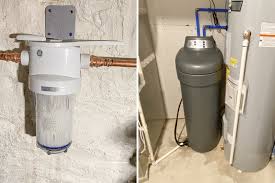Smihub Com – What is Smihub?

Smihub is a free tool that lets you browse Instagram anonymously. It also allows you to download stuff from the app. You can also use the tool to analyze the performance of your Instagram account. You can download and upload images and videos from Instagram. The tool has many benefits that you may want to try. If you are looking to maximize your Instagram presence, Smihub is an excellent option. Listed below are some of its top features.
Free Social Media Tool
Smihub is a free social media tool that helps you connect with other users who share the same interests and goals. Founded in 2014, Smihub provides a number of social media features including a news feed, messaging, and group features. Users can follow influential accounts and use the platform to create and share content. You can also hire Smihub to help you with your marketing efforts.
Using Smihub to locate others is very easy. You can search for people anonymously, by hashtag, location, and more. You can even view images and videos posted by other users. The best thing about Smihub is that it’s free to use. With so many social networking sites, why not try it? It’s a great way to discover who is following who, and what they’re talking about.
Browse Instagram
Smihub.com is a website that lets you browse Instagram with an anonymous name. It is also a useful tool for users who don’t want to reveal their identity. This website is intended for users who don’t want to be traced and stalked by other users. Smihub allows users to browse Instagram with an anonymous name and download pictures to their computer.
Location & Hashtags
Smihub is a free service that lets users browse Instagram with an anonymous name. The site allows users to search for Instagram accounts by location and hashtags and download their content to view it offline. This is especially useful for businesses looking to find out what followers of Instagram accounts are saying about their products and services. Using smihub, you can find the right influencers to follow and boost your business.
Smihub also offers other features that make it the perfect tool for anonymous Instagram browsing. For example, you can use the app to search for posts and analyze their comments and likes. You can also download posts to read offline. And if you want to share your content, Smihub has a feature that lets you do just that. The app has 25 million monthly users.
Using SmiHub, you can browse and download photos and videos from Instagram. This website uses a pseudonym so that you don’t have to log in to Instagram. You can browse other users’ profiles and evaluate their comments and followers. SmiHub has a lot of features and is quicker than Instabird. If you want to download stuff from Instagram, you should try it out.
Smihub is a free Instagram downloader that allows users to download stuff from Instagram. The site also has features that Instagram does not allow. For example, you can copy and paste hashtags from Instagram, and download the posts and pictures you want. You can even download your friends’ Instagram profile pictures. You can also upload pictures and videos to Instagram using Smihub. It’s easy to use and you’ll be saving a lot of time.
Monitor
Smihub is a tool that helps you monitor the performance of your Instagram account. This tool is free to use, and you can browse through Instagram posts without logging in. It also allows you to search for hashtags, locations, and topics to browse through posts and videos anonymously. This tool is especially useful for businesses and people who want to monitor the performance of their social media accounts but don’t want to worry about being tracked.
Final Words:
It is a simple and easy-to-use app for Instagram that gives you insights into your Instagram account. After signing up, you can log into Smihub and browse posts. It also lets you search for hashtags and look up users’ followers. You can also download posts so that you can read them offline. If you’re looking to analyze the performance of your Instagram account, Smihub is an essential tool to have.



